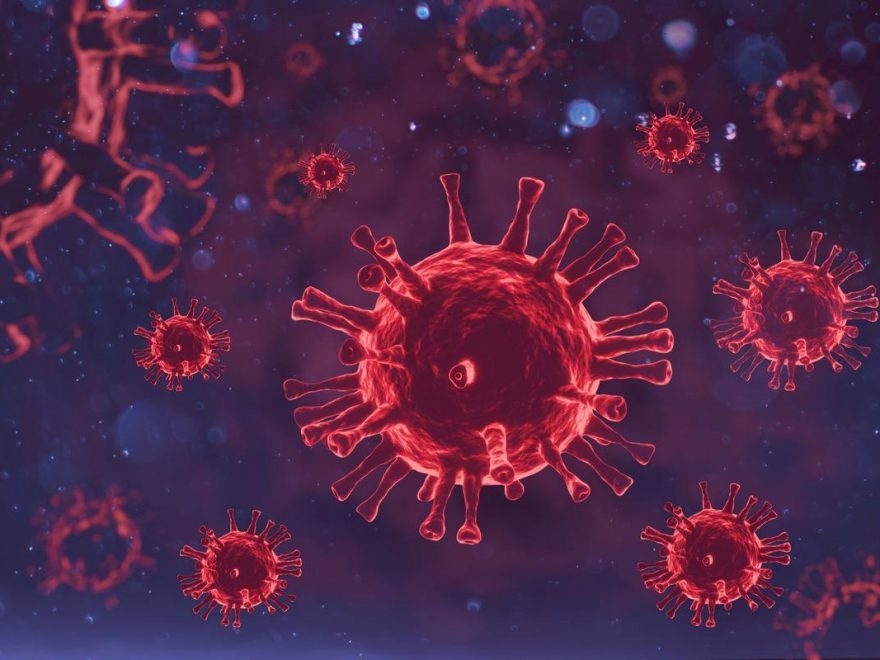The first longitudinal proteome-wide analysis of antibodies in coronavirus disease 2019 (COVID-19) patients has been performed by researchers from the Beijing Institute of Microbiology and Epidemiology and published in the Journal of Advanced Research.

The study
A total of 247 longitudinal serum samples were gathered from COVID-19 patients between 15 and 79 years old, 17 of which had severe disease and 24 of which had mild disease. These were gathered within 57 days of diagnosis and compared to serum samples gathered pre-2020 to act as controls. Using a proteome microarray, these samples were assayed to detect the full length N and E proteins, five truncated spike (S) proteins, and 966 peptides, each 15 amino acids long.
The IgM, IgG, and IgA levels against all these proteins were profiled, and the microarray data were normalized using z-score. Any peptides with a z-score higher than 1.96 were selected. A linear epitope landscape aligned to the sequence of these proteins was constructed, and the samples’ signals were plotted. B-cell epitopes could be identified by aligning immune reactive peptides with neighboring peptides. The identified epitopes were roughly evenly distributed on structural and non-structural proteins. The proteins with the highest epitopes frequency were the structural protein N and the non-structural proteins nsp13 and nsp3.
Following this, the epitopes of the IgM, IgG, and IgA antibodies were analyzed. IgG can recognize the most epitopes, at 224, followed by IgM at 187 and IgA at 86. ~20% of the epitopes recognized by IgM were in the structural proteins, compared to 26% and 30% for IgG and IgA. Next, the epitopes common to all three antibodies and specific to individuals were analyzed.
Sixty-four epitopes were commonly recognized by all types of antibodies, some of which were present throughout a COVID-19 infection and some of which were only present during certain stages. Nsp3 and 12 had more distinct epitopes in the non-structural proteins, and the S and N proteins showed more epitopes in total. Detailed epitopes analysis revealed that 33 epitopes were more likely to be recognized by IgM, mostly on non-structural proteins. IgG antibodies were significantly more likely to recognize structural protein epitopes.
The researchers then analyzed the variety of epitopes in samples from patients with mild COVID-19 compared to severe COVID-19. No difference was found in the number of antibodies recognized. Still, when differences in epitope-elicited antibody levels were examined, the expression levels of 23 IgM antibodies were higher in mild patients, and 5 IgM antibodies were higher in severe patients. This would indicate that those with severe disease had a weaker initial immune response in the early stages. The IgG responses were very similar in both groups, suggesting that the immune response was more comparable between groups in the later stages of viral infection. The changes in the number of IgA, IgM, or IgG-specific epitopes in mild and severe patients were longitudinally analyzed, revealing that the number of IgA-related epitopes remained stable until increasing in severe patients after 30 days and that IgG and IgM epitopes increased along with virus infection.
Finally, the frequency of all epitopes that elicited antibodies was analyzed, revealing diverse levels of epitope frequency. 21 IgM, 23 IgG, and 10 IgA-related epitopes had frequencies above 50%, while all other epitopes were below. Comparing the serum to healthy controls, 12 dominant epitopes elicited antibodies in over 25 patients, and two epitopes were associated with higher serum levels, but only in older patients. When mapping the linear sequences of these epitopes, it was revealed that the S-15 epitopes were located in the N-terminal domain of the S1 protein, and the S-82 epitope was in the fusion peptide of the S2 protein. These would be prime targets for neutralization antibodies, which previous studies have largely shown to target the spike protein.
Conclusions
The authors have analyzed a wide array of antibodies and profiled epitope frequency, and determined which epitopes were more likely to be recognized by which type of antibody. As well as this, they identified which epitopes showed different immune responses in mild and severe patients and 12 dominant B-cell epitopes that elicited antibodies in almost all patients. Finally, they successfully identified two strongly immunogenic epitopes, which could potentially be used in future vaccines.
- Wang, J. et al. (2022) "Longitudinal and proteome-wide analyses of antibodies in COVID-19 patients reveal features of the humoral immune response to SARS-CoV-2", Journal of Advanced Research, 37, pp. 209-219. doi: 10.1016/j.jare.2021.07.008. https://www.sciencedirect.com/science/article/pii/S2090123221001429?via%3Dihub
Posted in: Medical Science News | Medical Research News | Disease/Infection News
Tags: Antibodies, Antibody, Cell, Coronavirus, Coronavirus Disease COVID-19, covid-19, Epidemiology, Frequency, Immune Response, Microarray, Microbiology, Peptides, Protein, Proteome, Research, SARS, SARS-CoV-2, Spike Protein, Structural Protein, Virus

Written by
Sam Hancock
Sam completed his MSci in Genetics at the University of Nottingham in 2019, fuelled initially by an interest in genetic ageing. As part of his degree, he also investigated the role of rnh genes in originless replication in archaea.
Source: Read Full Article
